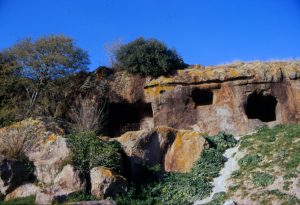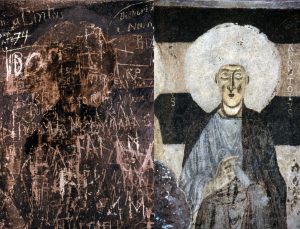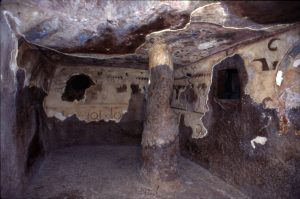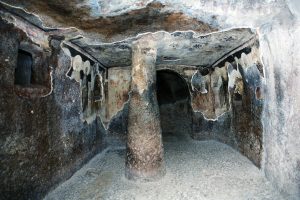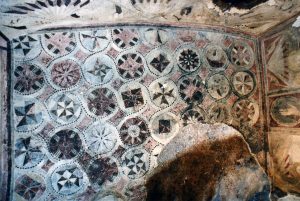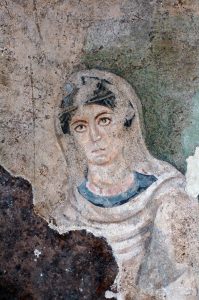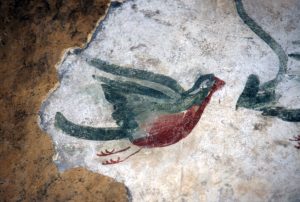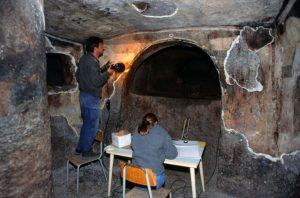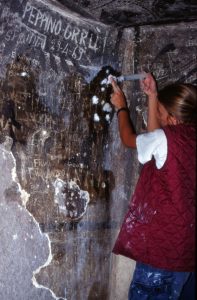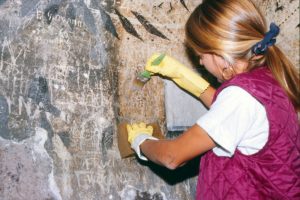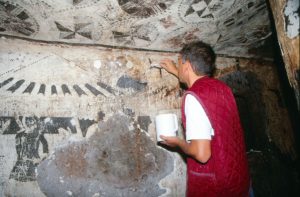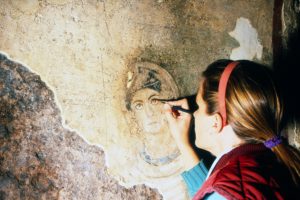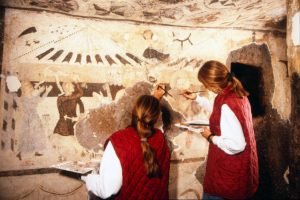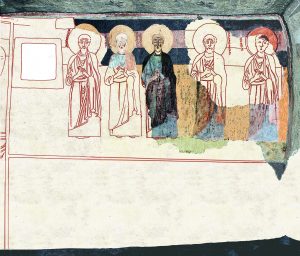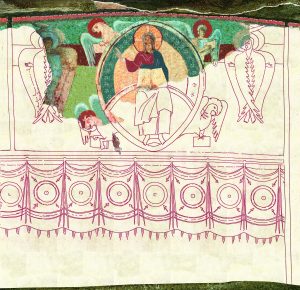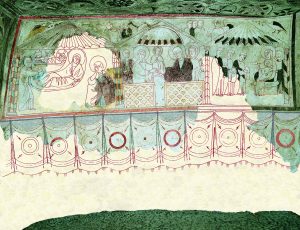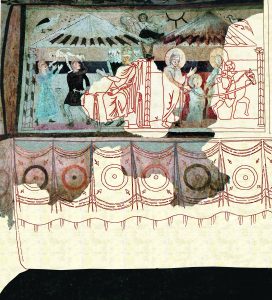Introduction
The necropolis of Sant’Andrea Priu goes back to the 3rd millennium BC. It is composed of some 15 prehistoric caves dug into the rock – the so-called “domus de Janas,” where collective burials were performed.
Of the surviving caves, the largest and most elaborate is the Chief’s Tomb, which in paleochristian and early medieval times was used for new burials and eventually transformed into a church.
In the hall and speaker’s platform of the tomb, there are fresco paintings attributed to the paleochristian phase and the structure’s subsequent transformation into a church.
The CCA’s conservation treatment focused on the advanced state of decay of the paintings, which were completely blackened by soot and scarred by graffiti, as well as the precarious condition of the entire complex.
The treatment was intended to restore legibility to the surfaces; improve the strength of the original materials, and provide as many elements as possible for future conservation of the entire structure.
Treatment phases included planning of systems for passive protection, study of original techniques and iconography, and computer reconstruction of the missing parts of the cycle as a prelude to developing didactic materials and public outreach.

